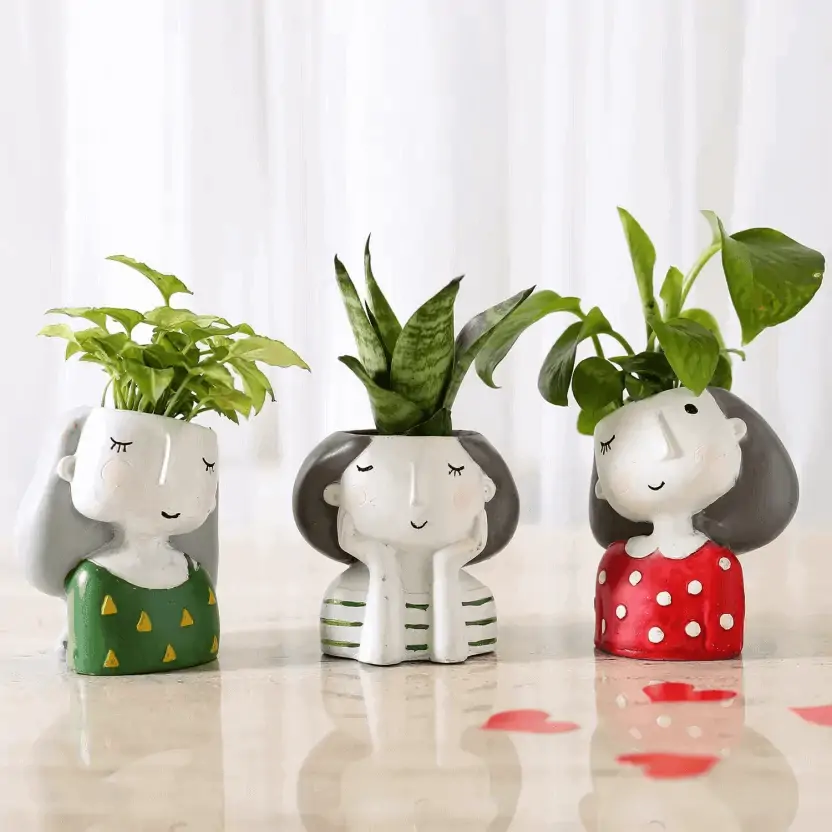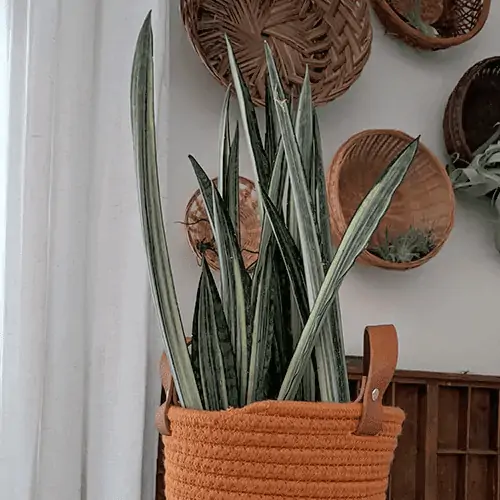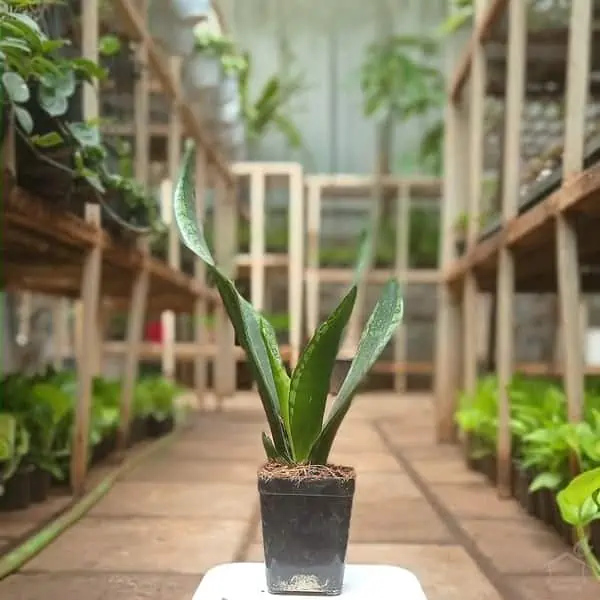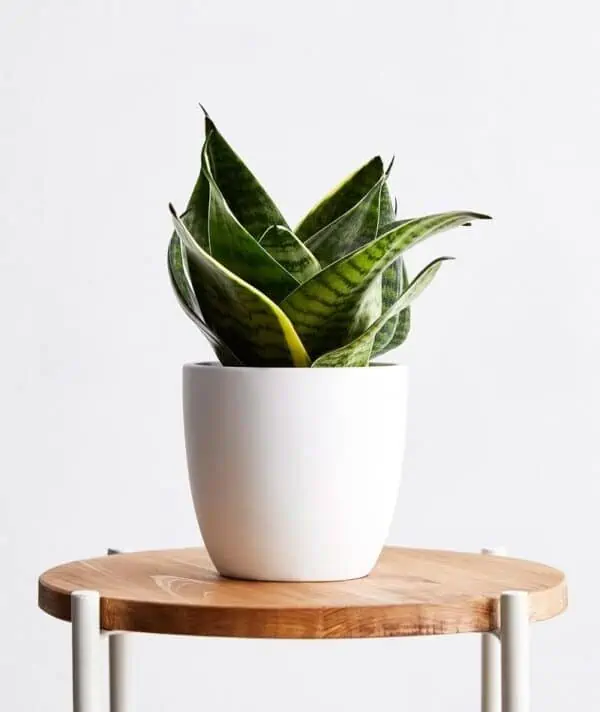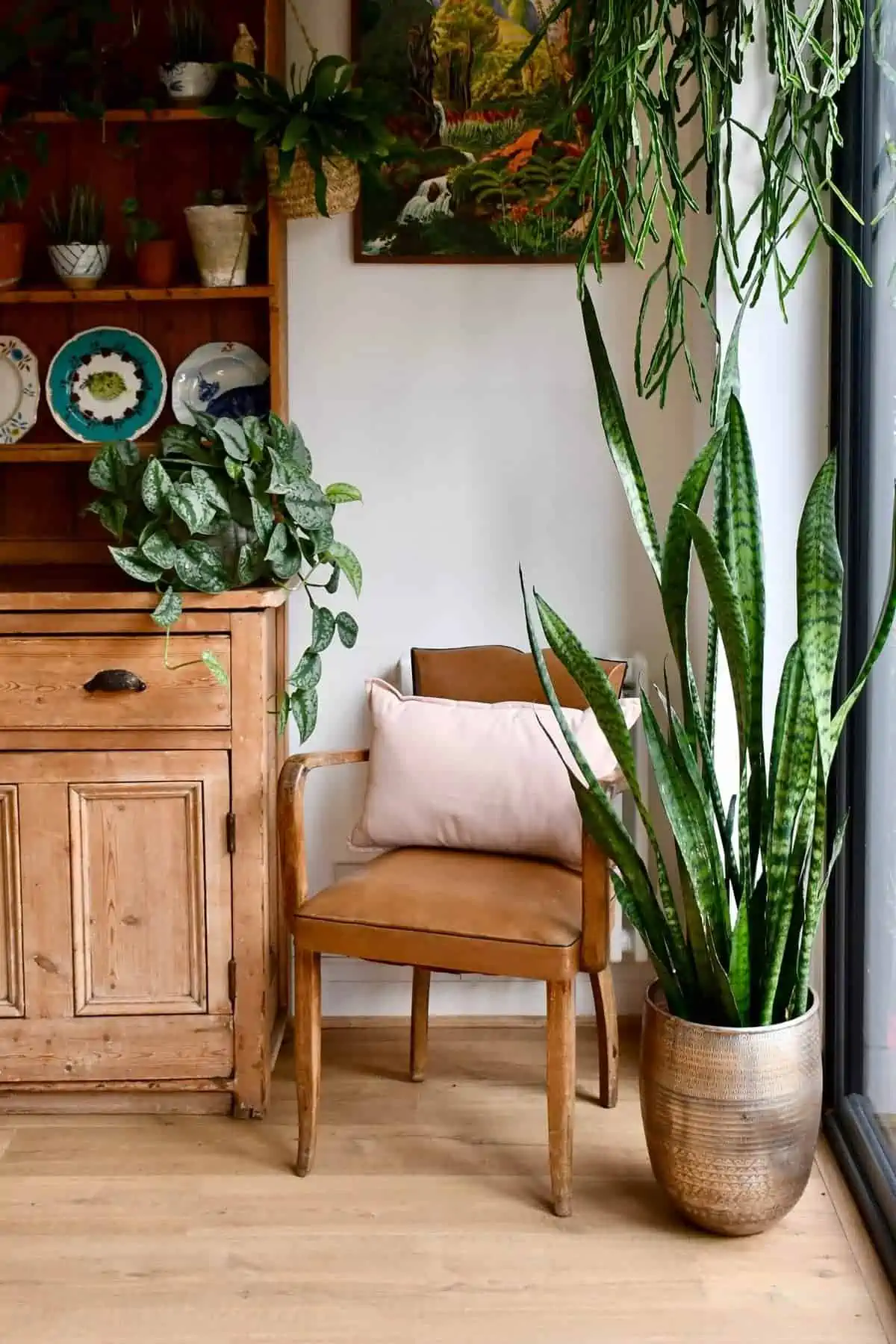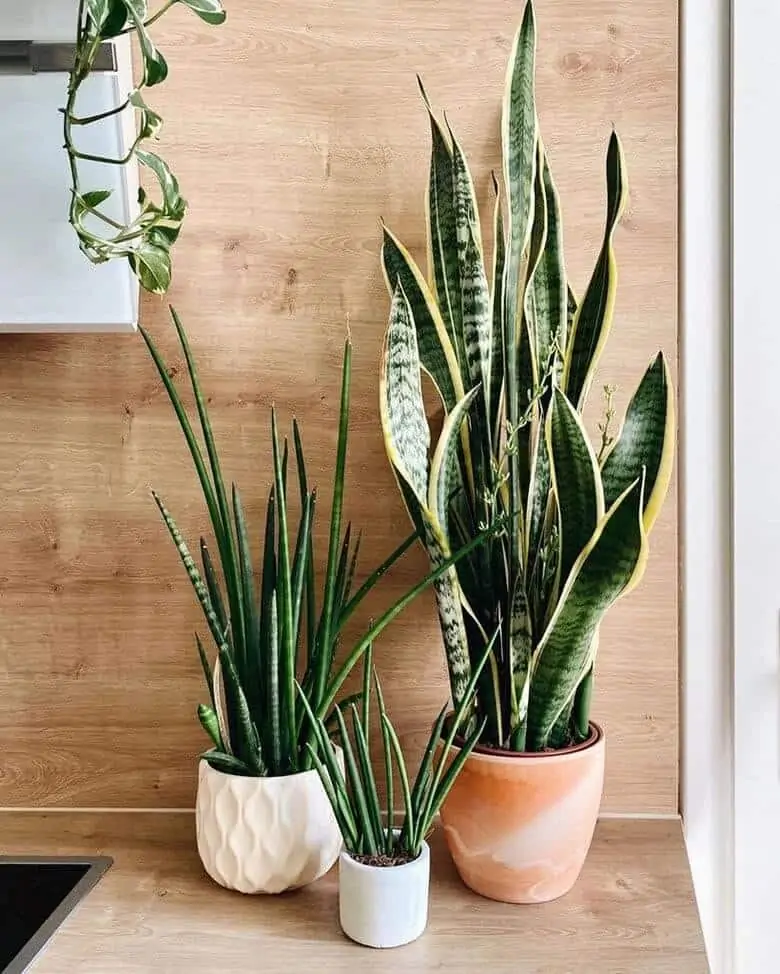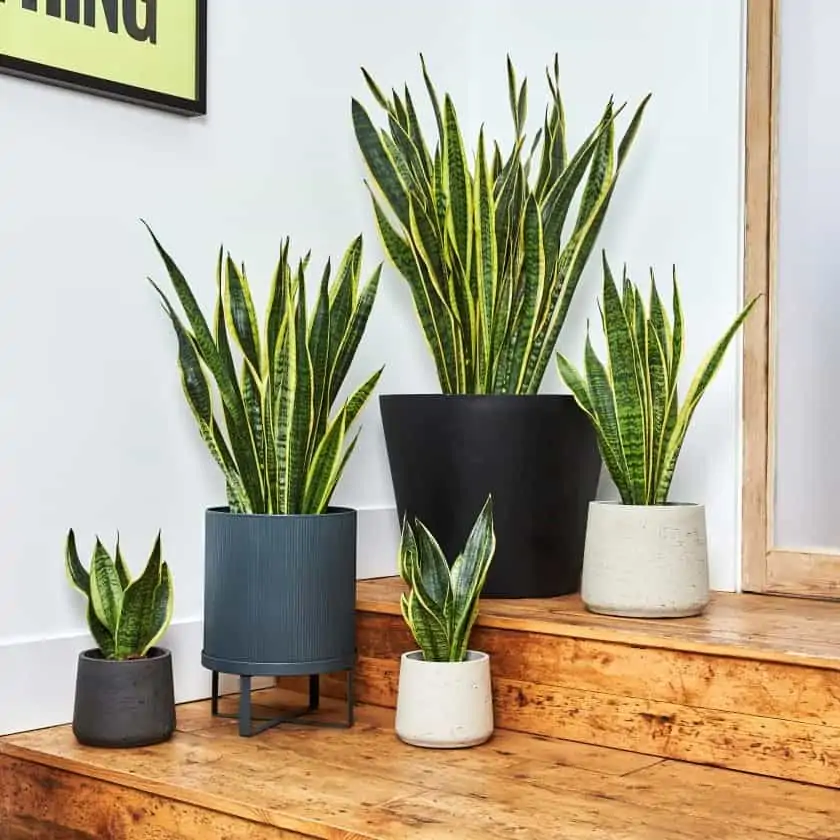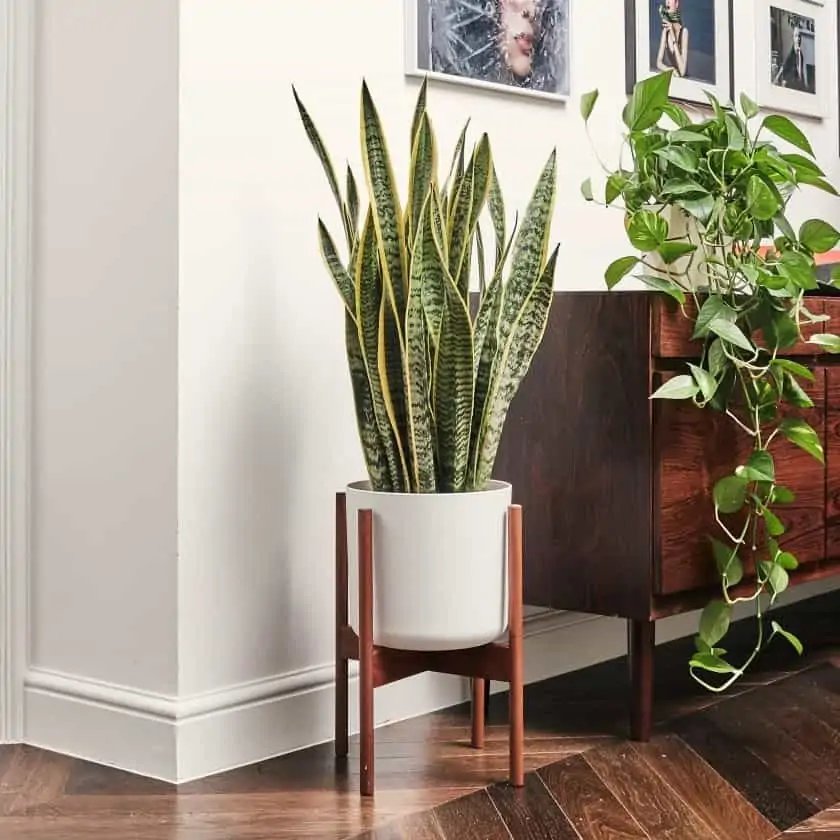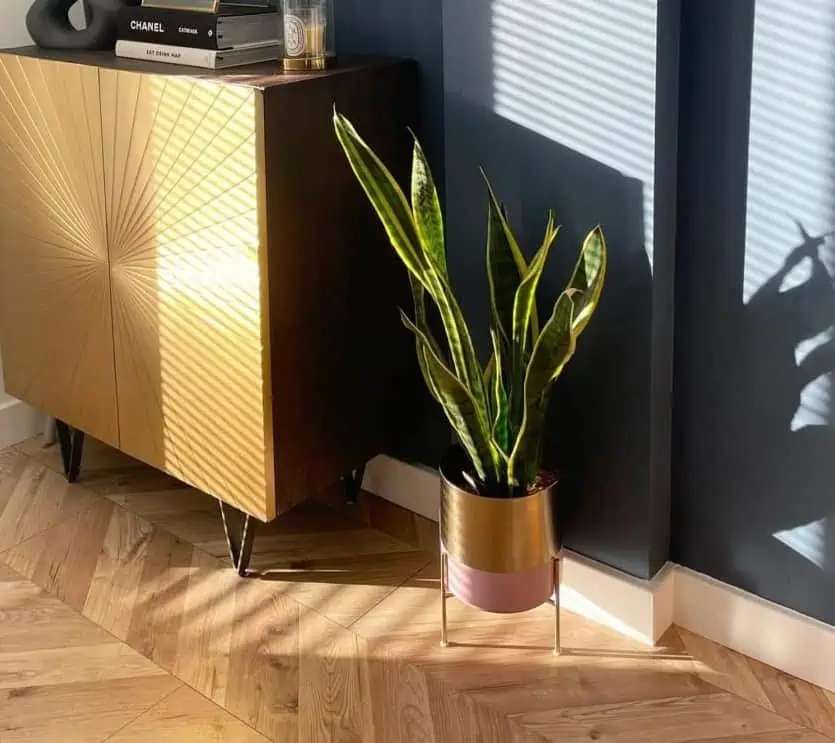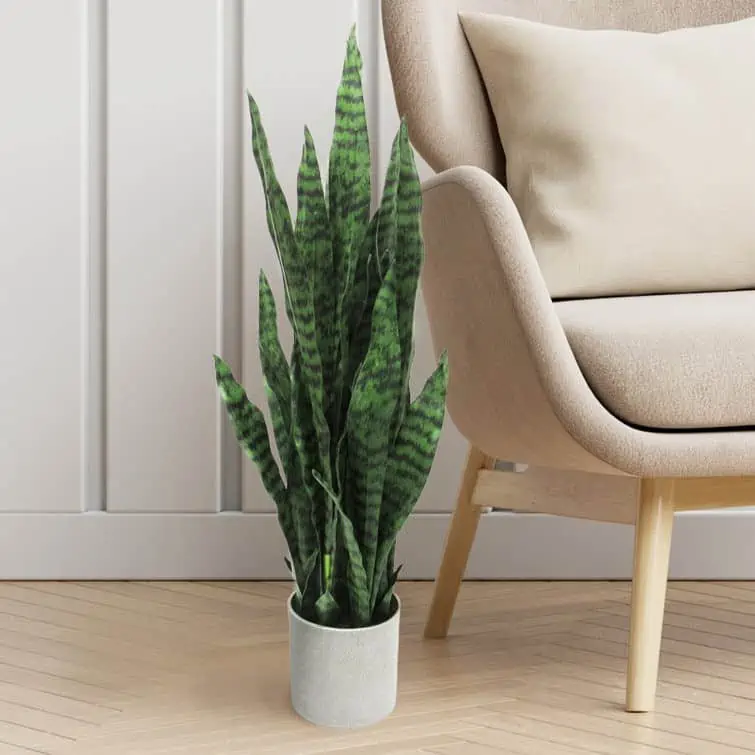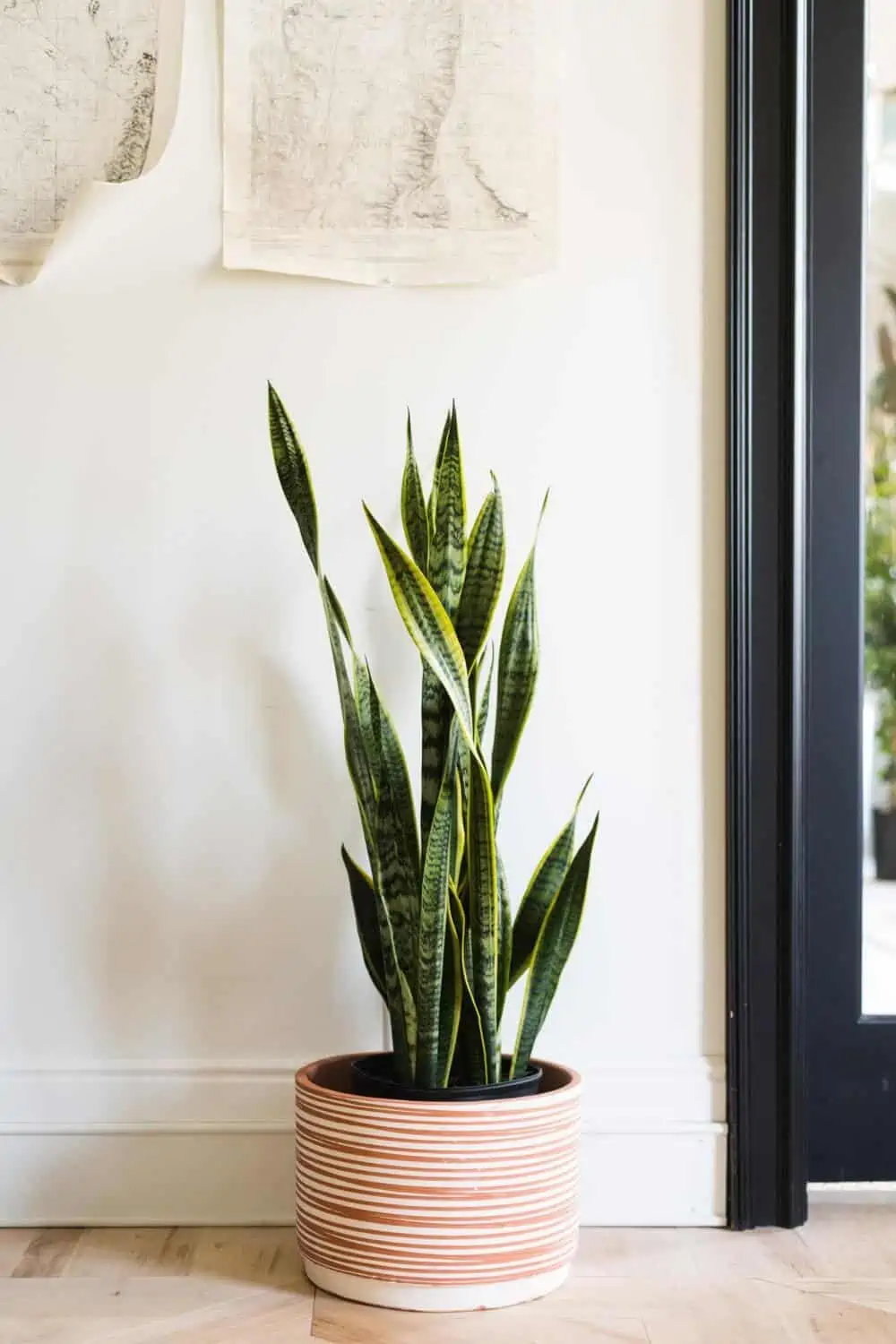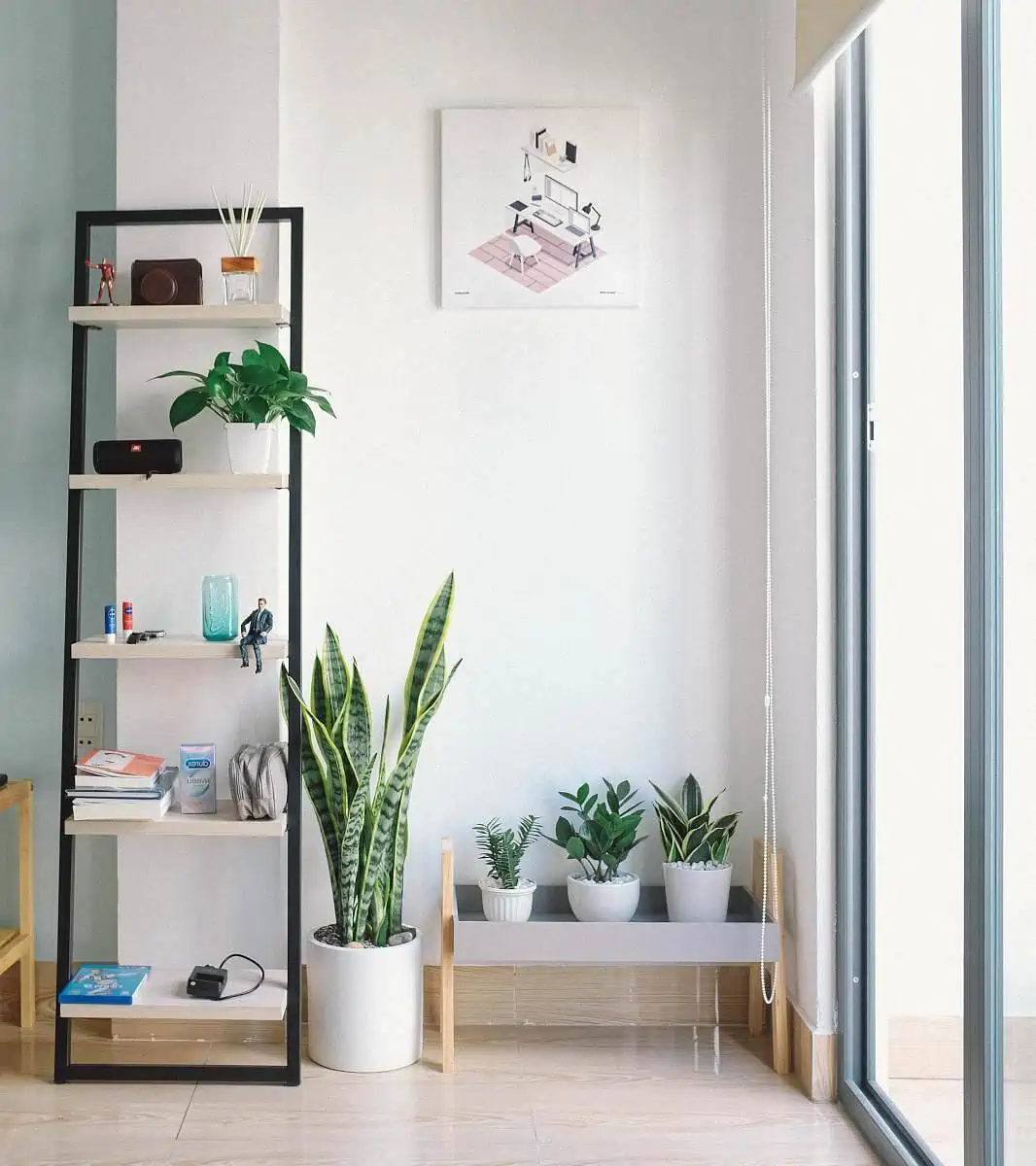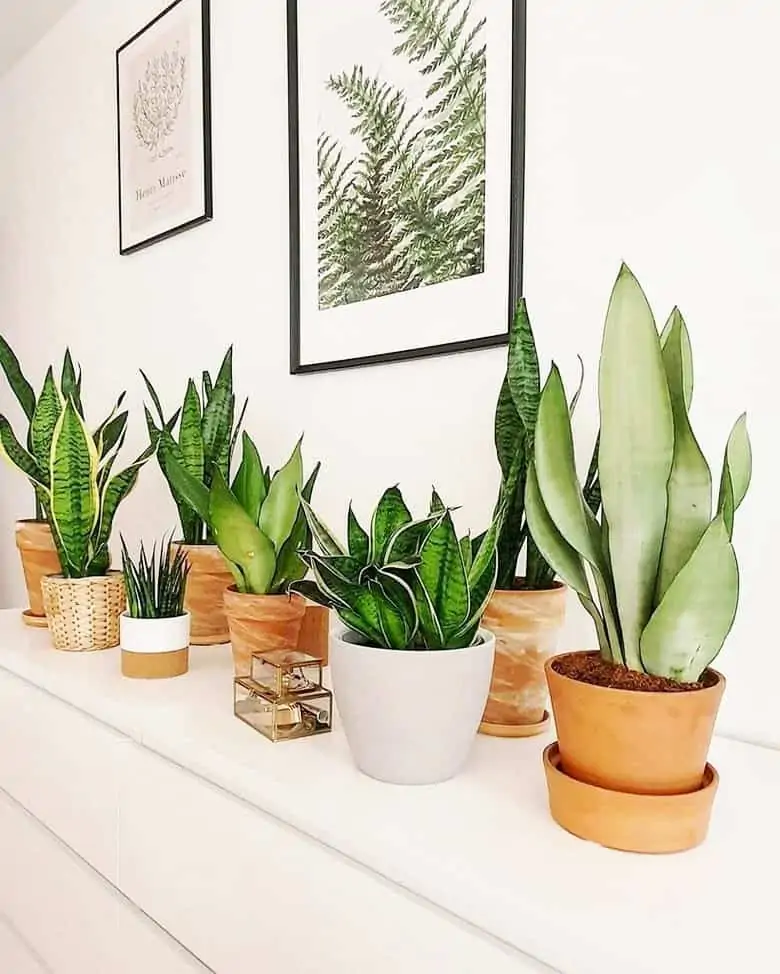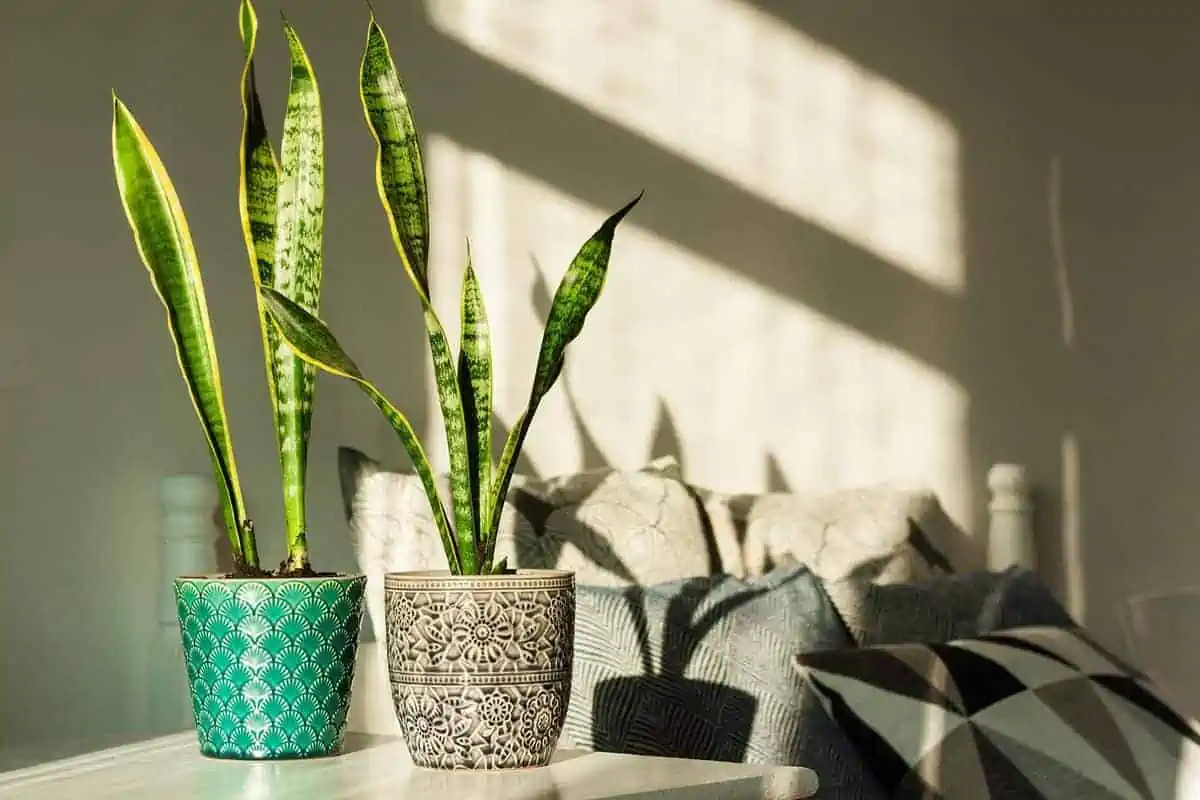A Snake plant is a common household plant that belongs to the family of Asparagaceae. Its distinctive feature is its sword-like leaves that grow upright to a height of around 6 to 8 inches. There are numerous benefits of adding Snake plants into your home. Moreover, there are several varieties of Snake plants that are easy to care for and ideal to be used indoors. Apart from being low-maintenance, they are also aesthetically pleasing. For that reason, adding a Snake plant indoors is a great way to subtly enhance your space while simultaneously reaping the many benefits it offers at an affordable price.
So, if you want to learn how to grow, care for, propagate, and incorporate a snake plant indoors to beautify your space, you have come to the right place. Also, we have added beautiful buying options for you to shop from!
Contents
- 1 About Snake Plant – An overview
- 2 Benefits of Snake Plant
- 3 Varieties of Snake Plant
- 4 How to grow a Snake Plant indoor
- 5 Care and propagation of Snake Plant
- 6 How to grow a Snake Plant from seeds?
- 7 Pests and problems
- 8 Tips for positioning a Snake Plant
- 9 Buy alluring Snake Plants at an affordable price here!
- 9.1 Pepperfry Green Snake Natural Plant
- 9.2 Ferns N Petals Set Of 3 Green Plants In Cute Girl Pots
- 9.3 Flower Aura Planted Snake Plant
- 9.4 Nurserylive Sansevieria Trifasciata Golden Hahnii
- 9.5 Nursery Nisarga ‘Bentel Sensation” (Sansevieria)
- 9.6 Rootbridges ‘Whitney’
- 9.7 Nursery Live Sansevieria Plant In Decorative Ceramic Pot
- 9.8 Ugao Snake Plant
- 9.9 Abana Homes Sansevieria Hahnii
- 9.10 Flower Aura Snake Skin Sansevieria Plant
- 10 Inspiration to create a stunning Snake plant display at home (Image gallery)
- 11 FAQs
- 12 Conclusion
- 13 How to grow 12+ Orchid types for exquisite home decor? (Buy now)
About Snake Plant – An overview
| Common names | Mother-in-law’s tongue, viper’s bowstring hemp |
| Botanical name | Sansevieria trifasciata |
| Family | Asparagaceae |
| Plant type | Succulent |
| Mature size | 1 to 3 ft. |
| Sun exposure | Partial, shade |
| Soil type | Loamy, well-drained |
| Soil pH | 5.5-7.0 |
| Bloom time | Springtime |
| Flower colour | White, greenish-white, cream, and yellow |
| Foliage colour | Dark green with white and yellow stripes |
| Hardiness zones | 9 to 11 (USDA) |
| Native area | Tropical Western Africa |
Benefits of Snake Plant
Apart from being aesthetically pleasing, the Snake plant offers a plethora of benefits, as can be seen in the list discussed below-
1. Natural air purifiers – They can absorb carbon dioxide, formaldehyde, xylene, benzene, and toluene. So, adding them indoors will help lower indoor air pollution. Additionally, they can convert carbon dioxide into oxygen even at night time. As compared to the other air purifiers available in the market, a snake plant comes at a lower price while offering the same benefits.
2. Low maintenance – Snake plants do well in shade, sun, dry air, or drafts making them easy to care for and preferred indoor plants. They are versatile plants that can survive the humidity of a bathroom or the dry air of an office. Furthermore, they don’t require frequent repotting, making them a hassle-free option to add indoors.
3. Home decor – Their unique and interestingly shaped leaves make them visually attractive and eye-catchy. They have both tall and dwarf varieties, making them perfect for home decoration. The tall varieties can nicely complement the corners, while the dwarf varieties can be placed on your office desk.
Varieties of Snake Plant
Hahnii

Image Source: Plantscaretoday.com
This dwarf variety is also known as the bird’s nest Snake plant. It can only grow 6 inches tall. Its distinctive feature is its leaves that form clusters closely resembling a cup comparable to a bird’s nest, hence the name.
Cylinder Snake Plant
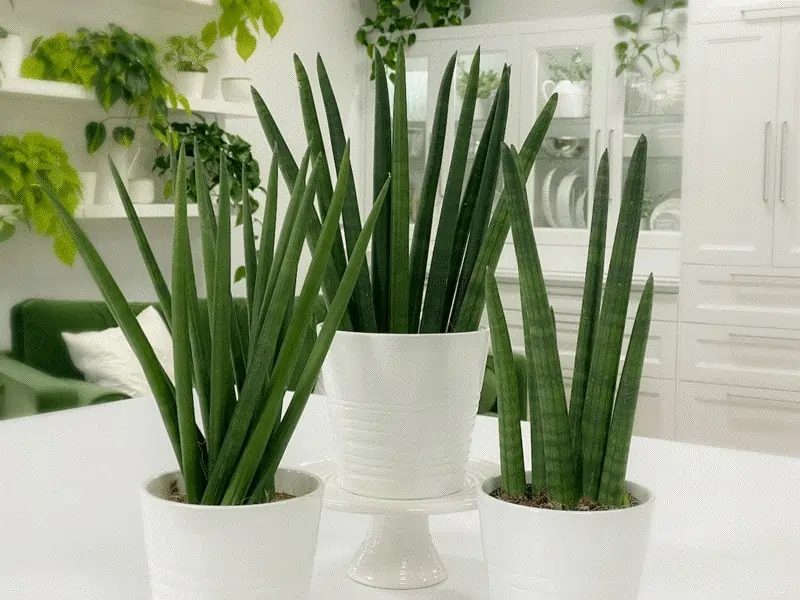
Image Source: Nouveauraw.com
This variety is especially resilient as it can thrive even if it is neglected for a long time. Therefore, this variety is ideal for first-timers or people with a hectic schedule. The cylinder snake plant gives all the benefits of an indoor plant at very low maintenance and price.
Golden Snake Plant

Image Source: Greg.app
This variety thrives on indirect sunlight and warmer temperatures. Therefore, the golden snake plant can survive well when planted indoors. Its name comes from its leaves which are dark green and outlined by yellow margins.
Twisted Sister Snake Plant

Image Source: Worldofsucculents.com
Its uniquely twisted leaves in bright yellow and green colour give it the name – twisted sister. It has a unique aesthetic which makes it an interesting addition to any space.
Snake Plant Compacta

Image Source: Nurtureplant.com
This variety thrives well in low-light conditions making it perfect for indoor use. So, this plant should be kept in indirect sunlight. NASA conducted a Clean Air Study, which proved that this variety of Snake plants is a good air purifier which justifies its comparatively high price.
Mother-in-law’s tongue
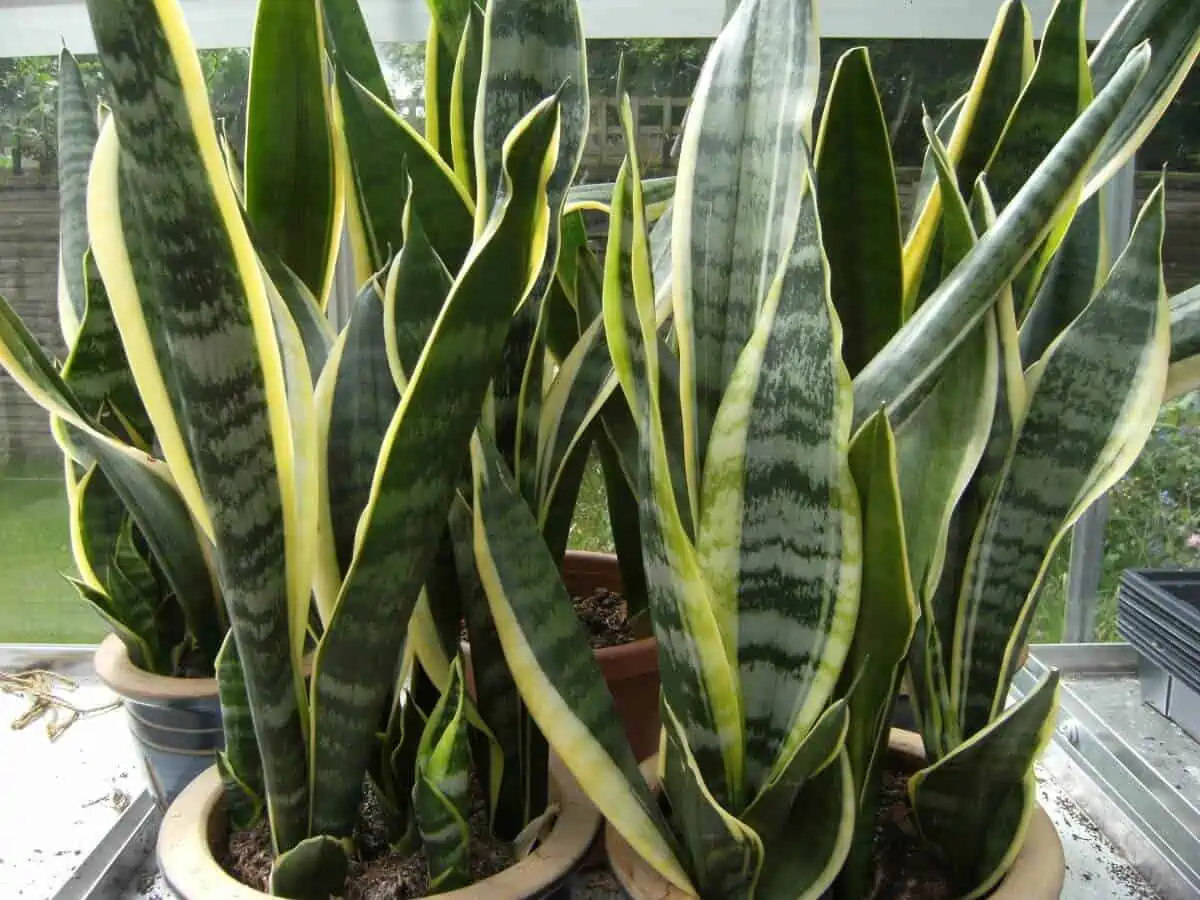
Image Source: Dengarden.com
The name comes from the sharpness of its sword-like leaves that grow upright. This is a flowering variety of Snake plants and is also the most commonly used variety. However, when grown indoors, it becomes difficult to encourage flower growth.
Mason’s Congo Snake Plant
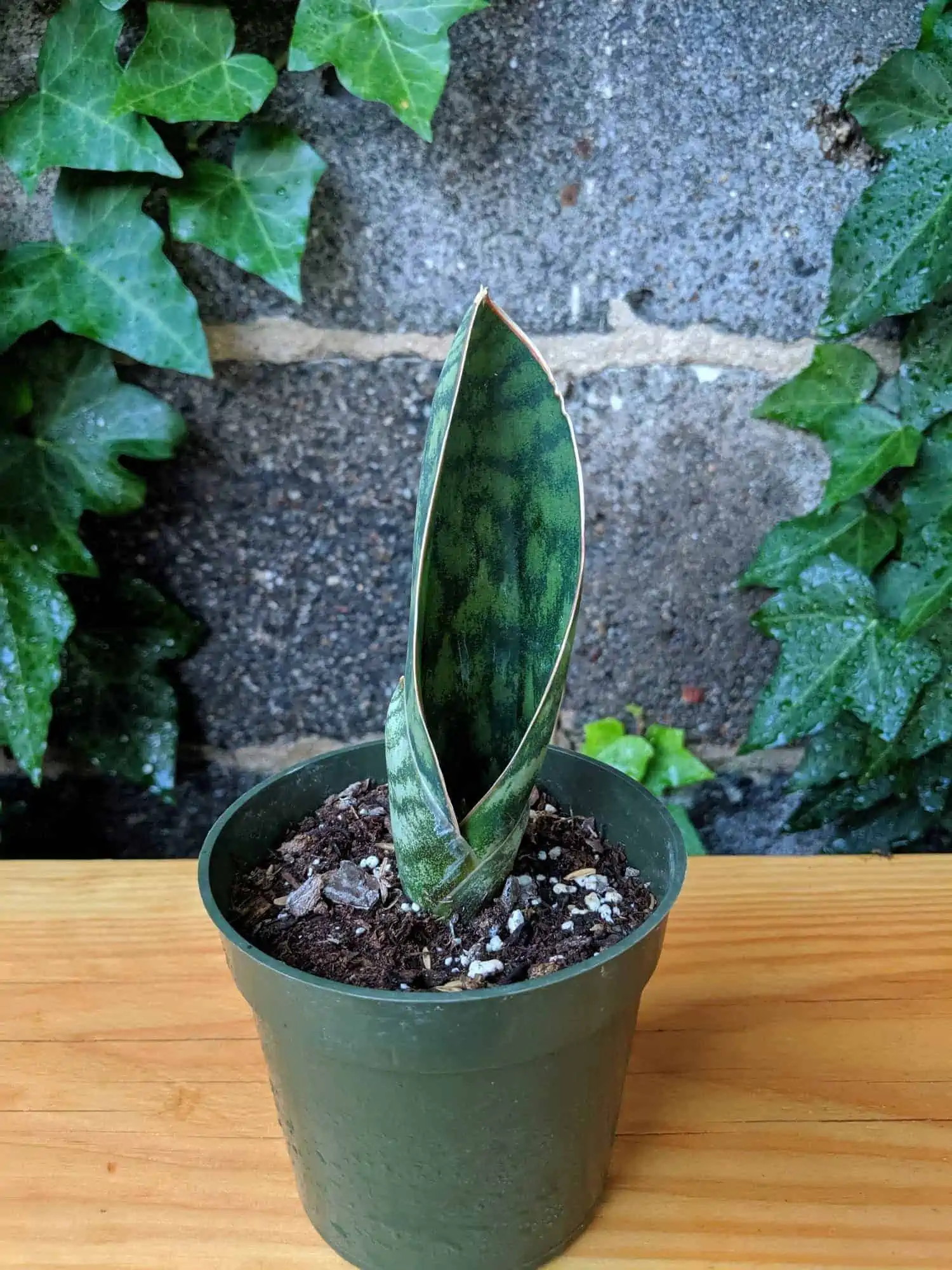
Image Source: Halpingarden.com
It is an aesthetically pleasing variety of Snake plants with dark green leaves and a spotty pale green pattern. Its leaves grow up to 4 feet long and 10 inches wide. It grows well in a moderately bright room with filtered light.
How to grow a Snake Plant indoor
- Select a good quality potting mix that is well-draining since Snake plants do best in a free-draining soil mix.
- Take your container and fill it two-thirds with potting mix. Now dig a well in the center of the soil. Take out your plant and loosen its roots.
- Put the plant in your container filled with potting mix and press in the soil. Now, add more soil to cover the top of the roots up to an inch.
- After planting, place the plant in a spot with indirect light.
- Water the plant until the soil is slightly damp. While watering the plant, avoid getting the leaves wet.
Care and propagation of Snake Plant
Top care tips
Light
A Snake plant is a low-maintenance, easy-to-care-for plant. It does not require much sunlight, so it should be kept in a spot with indirect sunlight. Also, avoid moving the plant from indirect sunlight to direct sunlight too quickly because this can shock the plant. This process needs to be done gradually over a week.
Soil and water
When it comes to watering, a Snake plant does not require much water. So, be mindful of not overwatering it, especially during winter. Do not water the plant too frequently, and make sure you allow the soil to dry out completely between watering sessions. To assess whether it’s time to water the plant, stick your finger or a wooden stick some inches into the soil. If you see any moisture or notice the soil sticking to the stick, don’t water the plant. Additionally, it’s preferable to water the plant from the bottom as this gives the plant more stability. Also, water the plant less often in winter.
Potting and repotting
For potting, pick a strong indoor planter because weak pots can be easily broken or cracked by strong roots. Snake plants are typically slow-growing plants that don’t require much repotting, but if they receive a lot of sunlight, they can grow quickly and need repotting or division. Repotting these plants is best done in the spring. Use fresh potting soil, a cactus potting mix, or a combination of the two whenever you need to repot this plant.
Temperature
Since these plants prefer warmer conditions, exposing them to temperatures below 10 degrees, Celcius may cause serious damage to the plant. Also, the plant will die if it is exposed to frost. It is ideal if the temperature is between 21 and 32 degrees Celcius.
Fertiliser
Throughout the growing season, feed your snake plant with a mild cactus fertilizer, a balanced liquid slow-release 10-10-10 fertilizer, or a 20-20-20 fertiliser that has been diluted to half-strength. If the plant is grown in a pot, then all you need is some general-purpose fertilizer, and you are good to go. Avoid using fertilizers during winter.
Pruning
To promote new growth, trim off damaged or mature leaves at the soil line using sterilised pruning shears, scissors, or a sharp knife. The growing season, usually summer or spring, is the optimal time to prune. Since pruning might stress a plant, it is ideal to do it when the plant is actively growing. If you wish to control the height of your plant, remove its tallest leaves. Also, get rid of any marred leaves and keep in mind that removing leaves promotes new leaf growth.
Top 3 propagation methods
A Snake plant is very easy to propagate. So, you can multiply yours for your home or as a gift for your fellow nature lovers. There are three ways of propagating a Snake plant. They have been discussed in detail below –
Soil
- Start by cutting a Snake plant leaf near its base. Allow the leaf to dry off and heal for around 1-2 days.
- After it has been dried, plant the leaf in some potting soil and water well. Ensure that the soil does not get too dry or too wet, as cuttings decay in soggy soil.
- Finally, keep checking the soil once every one to two weeks. Water the leaf if the top 2 inches of soil feel dry to the touch.
Water
- Cut off a Snake plant leaf near its base. Now make an upside-down V-shaped cut at the bottom of the leaf and place it in a jar of water. Ensure that the water level is slightly above the V cut.
- The roots will begin to grow after three to five weeks. After another two to three weeks, tiny pups will begin growing. After that happens, you can either let it continue growing in water or plant the rooted leaf in the soil.
Division
- Start by digging a clump of the plant out from the soil. Now, use a sharp, sterile knife to divide the root clump. Ensure that each division has roots and a leafy top attached to it.
- Finally, plant the divided clumps in new pots or a garden. This method yields a plant that is a true copy of its parent.
How to grow a Snake Plant from seeds?
Fill a three-inch pot with a well-draining seed starting mix or cactus potting mix. The seeds should be sprinkled over the potting mix. Put the pot in a warm, sunny place. To maintain warmth and humidity, wrap the pot in plastic wrap or a clear plastic dome. Remove the plastic covering as soon as you see seedling growth. During the germination phase, ensure that you keep the soil slightly damp but not wet or soggy. The seedling can be repotted when it’s three to four inches tall.
Pests and problems
This beautiful succulent plant is vulnerable to many pest infestations, such as gnats, scales, aphids, spider mites, whiteflies, and mealybugs. However, if you maintain the health of your plant, these infestations will not happen because insects only attack an unhealthy plant. If you have an infested plant, use a gentle water spray or pick off the insects to get rid of them and separate the infested plant. After that, use neem oil to prevent insects from attacking the plant again.
Another common problem for this succulent plant is root rot. Ensure that you water the plant only when the soil is dry because it cannot handle overwatering. If you experience root rot, it is best to repot the plant. These problems are just a small price to pay for the overflowing benefits offered by Snake plants.
| Also read: Jade plant: Benefits, care, propagation & 26+ decor ideas |
Tips for positioning a Snake Plant
According to Vastu
As per Vastu, Snake plants must be kept in the eastern, southern, or south-eastern corners of your home. Furthermore, they should not be placed above any surface or table. Also, they must not be surrounded by other plants in a way that blocks all their sides.
| Also see: Vastu Shastra: 29+ tips to design a Vastu-compliant home |
According to Feng Shui
As per Feng Shui, the best places to put a Snake plant are in the home office, entryway, kitchen, bedroom, dining room, and bathroom.
Home office – Placing a snake plant in your home office will increase your concentration and productivity. For that, you can place the plant anywhere in your office, including on top of desks or bookshelf.
Rooms in the South area – Putting a snake plant in the southern rooms of your house gives you more courage and improves your judgment. However, if your snake plant is over a foot long, avoid placing it in this area as it is said to invite negative energy into the home.
Rooms in Southeast and East areas – Placing a plant in these areas keeps you motivated and makes you more creative. For that to happen, ensure that you do not place a larger plant in this area.
Dining room – Putting a snake plant in this area of your house will bring you wealth. A plant of any size can be placed in the dining room anywhere, including the dining table, shelves, or windowsills.
Buy alluring Snake Plants at an affordable price here!
Pepperfry Green Snake Natural Plant
Bring nature indoors with the Pepperfry Green Snake Natural Plant, a stunning houseplant that requires minimal care and adds a touch of freshness and serenity to any space at an affordable price.
| B U Y H E R E |
Ferns N Petals Set Of 3 Green Plants In Cute Girl Pots
Infuse charm and cuteness into your decor with the Ferns N Petals Set Of 3 Green Plants In Cute Girl Pots. It will also add a delightful touch of nature and whimsy to any corner of your home or office.
| B U Y H E R E |
Flower Aura Planted Snake Plant
Enhance your space with the Flower Aura Planted Snake Plant, a versatile and resilient plant that not only adds a touch of elegance but also purifies the air. Moreover, it creates a healthier and more inviting environment.
| B U Y H E R E |
Nurserylive Sansevieria Trifasciata Golden Hahnii
Elevate your indoor garden with this stunning and compact snake plant variety. It showcases vibrant golden edges, bringing a touch of sophistication and style to any space.
| B U Y H E R E |
Nursery Nisarga ‘Bentel Sensation” (Sansevieria)
Introduce a striking visual element to your indoor garden with Nursery Nisarga ‘Bentel Sensation’ Sansevieria. It adds a touch of elegance and intrigue to any space.
| B U Y H E R E |
Rootbridges ‘Whitney’
This Rootbridges ‘Whitney’ is a pro at not just enhancing your home interior with its attractive foliage but also the indoor air quality. It also showcases stunning white blooms which turn your home into a timeless beauty.
| B U Y H E R E |
Nursery Live Sansevieria Plant In Decorative Ceramic Pot
Embrace serenity and auspiciousness with Nursery Live Sansevieria Plant in a Decorative Ceramic Pot adorned with a Ganesha idol. It combines the beauty of nature with divine symbolism for a harmonious and visually stunning addition to your home or office.
| B U Y H E R E |
Ugao Snake Plant
Introduce your space to this sleek and stylish Ugao Snake Plant. It’s a low-maintenance and air-purifying indoor plant that brings a touch of modern elegance and natural beauty to any room.
| B U Y H E R E |
Abana Homes Sansevieria Hahnii
This plant stands tall and is handsome thanks to its attractive leaves, which have a splash of green and yellow colour. It looks great in any nook of your house or workplace.
| B U Y H E R E |
Flower Aura Snake Skin Sansevieria Plant
Unleash the alluring charm of the Flower Aura Snake Skin Sansevieria Plant. It features unique patterned leaves that resemble snakeskin, adding a touch of intrigue to your indoor garden.
| B U Y H E R E |
Inspiration to create a stunning Snake plant display at home (Image gallery)
-
1. Image Source: Happyhouseplants.co.uk
-
2. Image Source: Jayscotts.com
-
3. Image Source: Kidzo.fr
-
4. Image Source: Patchplants.com
-
5. Image Source: Patchplants.com
-
6. Image Source: Photostockeditor.com
-
7. Image Source: Photostockeditor.com
-
8. Image Source: Vintagerevivals.com
-
9. Image Source: Patchplants.com
-
10. Image Source: Wayfair.com
-
11. Image Source: Vintagerevivals.com
-
12. Image Source: Photostockeditor.com
-
13. Image Source: Vintagerevivals.com
-
14. Image Source: Happyhouseplants.co.uk
-
15. Image Source: Kidzo.fr
-
16. Image Source: Kidzo.fr
-
17. Image Source: Gardentabs.com
FAQs
How long does a Snake Plant live?
Typically, these plants live between five to ten years, but with proper care, some Snake plants have been known to live for up to 25 years. So, you can enjoy the plethora of benefits offered by Snake plants for plenty of years at a very low price because these plants are inexpensive.
Are Snake Plants easy to care for?
Yes, this beautiful succulent plant is perfectly low maintenance which makes it a great plant for beginners and those with busy lives. In fact, it can survive even when neglected for a long time. It can survive in indirect sunlight and doesn’t need to be watered very frequently.
Are Snake Plants toxic to dogs?
Yes, these plants have a chemical called saponin, which tends to be toxic to small animals such as cats and dogs. If ingested, your pet might experience vomiting, nausea, diarrhoea, or drooling.
What is the best time to plant Snake Plants?
Spring is the best time to plant this succulent because springtime is when this plant actively grows. If you plant it during springtime, it is possible that it will grow comparatively quickly.
Can Snake Plants grow in low light conditions?
Yes, these highly resilient succulent plants can thrive in indirect sunlight or areas with dim lighting. However, placing the plant in direct sunlight makes it grow at a faster pace.
Can Snake Plants grow outdoors?
Yes, there are a variety of snake plants that can be grown both indoors and outdoors. It is important to note that while these plants can survive direct sunlight, it prefers indirect sunlight, so pick a spot for it accordingly.
| Also read: Landscaping 101: Increase quality of life & value of your house |
Conclusion
The threat of air pollution looms large upon our generation, but don’t reach out for those expensive air purifiers just yet. A Snake plant can do all of that for you at very low maintenance because it’s so easy to care for. Due to its low price, a Snake plant is easy on the eyes and the purse. Being an ideal plant for a nature lover with a busy schedule, it can enliven your space with the bare minimum effort. The different varieties of Snake plants and their numerous benefits make them compatible to be placed in any room or setting, be it your house or office. So, now is the time to parent a Snake plant to enhance your indoors! Also, feel free to conveniently buy one for yourself from the list of options displayed above.
*The featured image used in this article is from Pennington.com
How to grow 12+ Orchid types for exquisite home decor? (Buy now)
Decorating your home with beautiful plants can be a pleasant yet challenging task. This happens because a lot of time is spen












